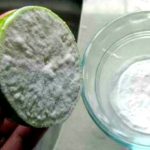Climate Change
Today, we have a climate emergency. Thanks to global warming, our planet and everyone on it are in danger. Thanks to fossil fuel emissions, pollution, and greenhouse gases, glaciers are melting, and the ocean levels are rising. Global warming threatens human existence in some very frightening ways.
1816
In 1816, the change in the planet’s climate did the opposite. Rather than heating up, it got cold. In most parts of the world, 1816 was the year without a summer. The beginning months of 1816 were cold, but it wasn’t anything significant. It was relatively dry, but not too cold. When spring arrived, the temperature outside starting warming up. When it was time for summer to arrive, it never came. The cold weather came back, which caused severe issues.
Failed Crops
Because it got so cold during the summer when crops often thrived, they failed. This put people all over the world at risk of hunger and even starvation. The average temperature across the globe fell by over a degree. This may not sound like much, but it caused very long stretches of cold weather. That chill of 1816 was known as the Year Without a Summer. Others called it “Eighteen Hundred and Froze to Death.
Gloomy Fog
During what should have been the summer of 1816, a gloomy fog settled over the eastern seaboard of America. Instead of it being sunny, there was a red haze in the sky. It was so dim during the day that you could see sunspots without a telescope. It was discovered early on that nothing could clear the fog. When it rained, it was foggy. When it was windy, it got foggy. The fog blocked the sun, which made for a very cold summer.
New England
New England residents didn’t notice anything off at first. January was average, and some areas were warmer than others. As the year went on, the temperature didn’t rise as expected. Also, the rainfall was much lower than the average. Up until May, it was so cold out that crops couldn’t grow. They couldn’t even be planed, which would set back the crop season greatly. In May, a woman stated that the weather was going backward. When the weather just started to warm up, it started going back and getting cold again. In May 1816, an unseasonal frost high the Northeast United States. In June, it snowed.
June 7th Diary Entry
A man named Benjamin Harwood wrote in his diary about the strange weather patterns. He wrote, “The surface of the ground was stiff with frost, and the leaves of trees were blackened. Past six in the morning, a washtub full of rainwater was scum’d with ice, snow remained on Sandgate and Manchester Mountain past noon or as late as that.”
Problems In July
According to a Virginia resident, Pharaoh Chesney, July 4th, was so cold that the water froze, and it snowed. This resulted in the Independence Day celebrations to be held in churches, with the hear fires roaring. While all of this was going on, American founder, Thomas Jefferson was also struggling with the harsh conditions in Virginia. Because his corn crop failed due to the cold, he had to take out a loan to keep his Monticello plantation running.
8 Failing Crops
In most parts of New England, thee were only two periods of time where frost didn’t cover the ground. It snowed in June and again in July. The extreme weather damaged the crops severely. The corn didn’t have a chance to ripen, and far fewer vegetables and fruits reached maturity. Those who did were very small and not really worth buying.
https://scribol.com/wp-content/uploads/2019/10/11-Rotting-Potatoes-1024×683.jpg
Crazy Weather Patterns
Most of that summer saw crazy weather patterns, not just in New England, but also in Pennsylvania and Virginia. On an average day, the temperature could go from freezing to the mid-90s in just a few hours. These weather fluctuations were far from ordinary. The problems with the weather didn’t only affect those in the Northern U.S. Because the crops in New England had failed, the rest of the country and even Canada felt it. In Quebec, Canada, the people struggled to find enough to eat, and bread was in short supply. People in the Northeast were leaving due to the weather, moving west to Illinois and Indiana hoping for better weather and more to eat. This rise in population is what helped Indiana become a state in 1816, and then Illinois in 1818.
The Rest Of the World
The Year Without Summer didn’t just cause problems in the United States. Torrential rains fell in Ireland, which destroyed the potato fields. It also rained a lot in Europe, which also caused food shortages. People were starving all over the world, thanks to the crazy weather that year. People all over the world were dying of starvation, drowning in floods, and being killed during riots of food. It was a very desperate time for everyone in the world. Fortunately, the weather patterns returned to normal the next year, and our planet hasn’t gone through anything as severe since.


